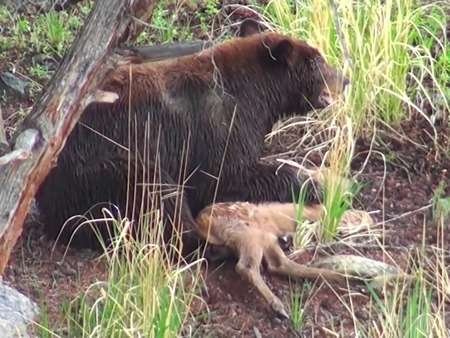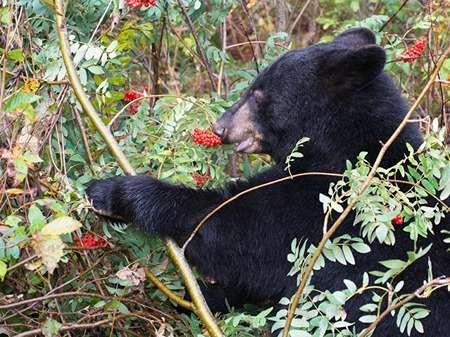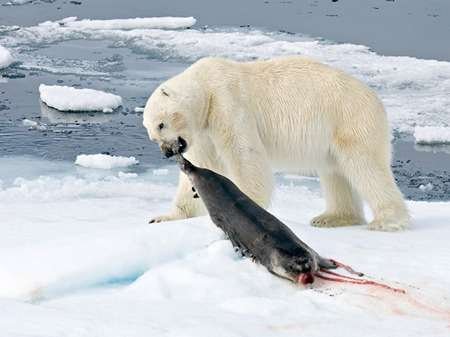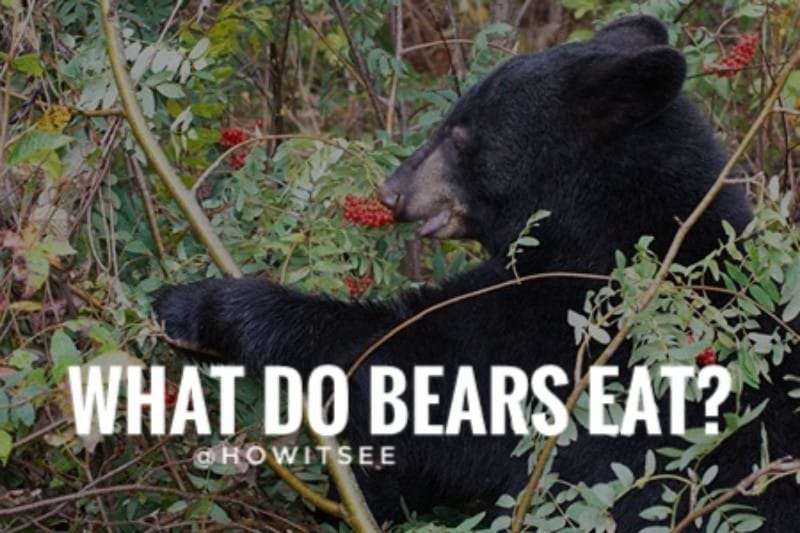We have many different feelings about bears, including love, anger, fascination, and fear. We appear to have descended from distinct branches of the mammalian family tree. Fruit and seed eaters at first, humans eventually adopted the more useful omnivorous role.
Grizzlies, black bears, and Polar bears are creatures that seem better suited to be carnivores, but they pursue an omnivorous diet. Over the years, they have learned to take advantage of various food sources in a wide range of settings. Their plethora of items in their diet often raises a question among curious minds, What do bears eat throughout the year?
To clear the fog, we bring today’s article, “What do Bears Eat in Different Seasons?”
The answer to this question is: During summer, they feed on fruits and berries, like blueberries, buffalo berries, etc. During fall or autumn, they resort to fatty foods like fish, especially spawning salmons, animal carcasses, and roots and greens. During winters, most bears hibernate, so there is very little or no foraging. After winter comes spring, when they emerge from their dens, famished, they depend on budding grasses and berries and animals killed by the freezing winter.
Later in this post, “What do Bears Eat in Different Seasons?“, we will discuss bears’ seasonal food habits vividly. So without further delay, let us dive into our article. This write-up dedicates Polar bears to a separate section due to their restricted geographic occurrence and harsh habitat.
Bear’s feeding habits
Bears eat opportunistically. Their eating cycle alternates between very high and very low food intake. Bears hibernate during the winter months because there is regional food scarcity. When they emerge, they have already lost a significant amount of weight and so begin their cycle to refill their starving bodies.
Their food intake progressively grows and peaks in the fall months, when they graze on nearly anything and can spend up to 20 hours looking for and consuming food. This stored nourishment is depleted during their winter hibernation. By March, they begin to emerge from their burrows, and the cycle begins again.
What do Bears eat in Summer?
Summer lasts quite long, with its onset being somewhere in late April or early May, and can extend up till August. The summer months witness quite a diverse side of the climate, and with its merge, with Monsoons, it plays a significant role in determining the food habits of Black and Grizzly bears.

The major bear species, the American Black Bear and the Grizzly or Brown Bear, inhabit the northern regions of the United States like Alaska and Canada. Alaska has Summers in the temperature range of 11-15 degrees Celsius, while that of Canada is nearly 20-27 degrees on average.
The summer season marks the onset of mating season for bears, which starts from May for Grizzly bears and June for Black Bears. Summer months are the main feeding days for bears, as nature blooms and food sources are surpluses all around.
During this period, juvenile bears leave their mother’s protection and set off independently. Needless to say, only a few of them survive, as most of them get killed by predatory bears. Most of the summer diet is partly used to replenish the body and partly for their winter reserve.
Their summer diet primarily includes:
- Protein-rich fresh grasses
- Berries
- Fruits and nuts
- Moose calves and Deer fawns
- Acorns
- Spawning salmons during August
What do Bears eat in Winter?
The bear species relies heavily on the winters to survive. The winter months of January and early February are when cubs are born. The abundance of extra food drastically decreases throughout the winter, forcing bears to retreat into their dens. There, they slumber during the winter, a process known as hibernation.
The mother’s milk is what the cubs nurse on. During these bitterly cold winter months, rarely do any feeding operations take place. During this phase, their metabolism slows down to a considerable extent, and the nutrients which were stored in their bodies as fats now get used up.
Bears at lower latitudes, on the other hand, rarely hibernate due to the availability of food all year. In rare instances, bears leave their dens and venture into neighborhoods in search of food in trash cans and pet bowls.
What do Bears eat in Spring?
After the harsh famishing winter comes Spring with blossoms all around. New grasses come up, and plants bloom once again. Bears emerge out from their dens during April, ready to gobble anything that’s edible before them. As Mother Nature shrugs the snow off her shoulders, new life begins to emerge.

These young plants are rich in protein and are easily digestible, hence are one of the most loved foods, as it aids in replenishing their starved body.
Cubs are introduced to the world during the spring season when they come out of their dens following their mother. The nourishment required is the highest during the spring season as bears have to refill their famished bodies.
Food bears eat in Spring:
- Flowers
- Newly growing leaves and grasses
- Dandelions
- Fawns and calves as sources of protein
What do Polar Bears eat?
Polar bears are the largest carnivores on the planet. They inhabit the polar ice-capped regions of the Northern Hemisphere, the Arctic. Covered by ice all around the year, there is hardly any diversity found on the land, except for a few endemic species. Therefore, a polar bear’s diet mostly revolves around flesh, which amounts to nearly 93%.

Polar bears primarily feed on:
- Seals, mostly Ringed seals, Harp seals, bearded seals, etc.
- Young whales
- Fishes
- Shellfish
- Other marine mammal carcasses.
Here, we conclude our article on, “What do Bears Eat in Different Seasons?” You might as well check out our other articles on Bears and several other niches. We will be bringing more such articles, so stay tuned until then.
Also Read:

Meet Abhidept (nickname Monty), the visionary founder of How It See, being an engineering student, he’s fueled by an insatiable curiosity about the world around him. He is captivated by an eclectic correlation between animal groups, science, and nature, and this fascination drives his quest for understanding.
After completing his degree, he’s set on a mission to delve deep into the realm of nature, accumulating knowledge to share with you through his writing. In the meantime, he loves to watch anime and read anime.
